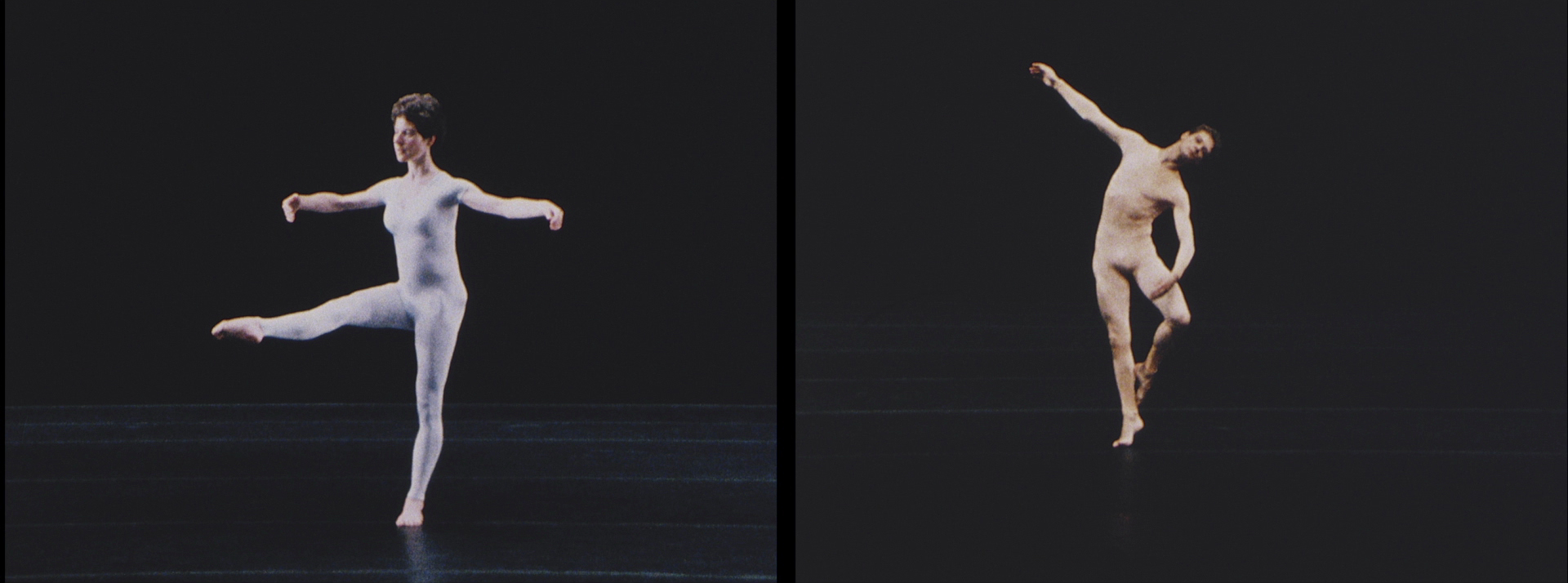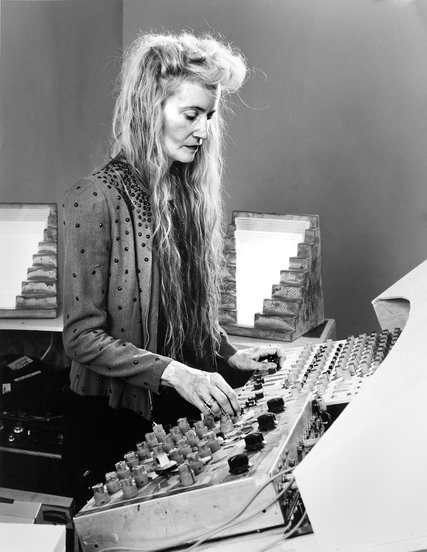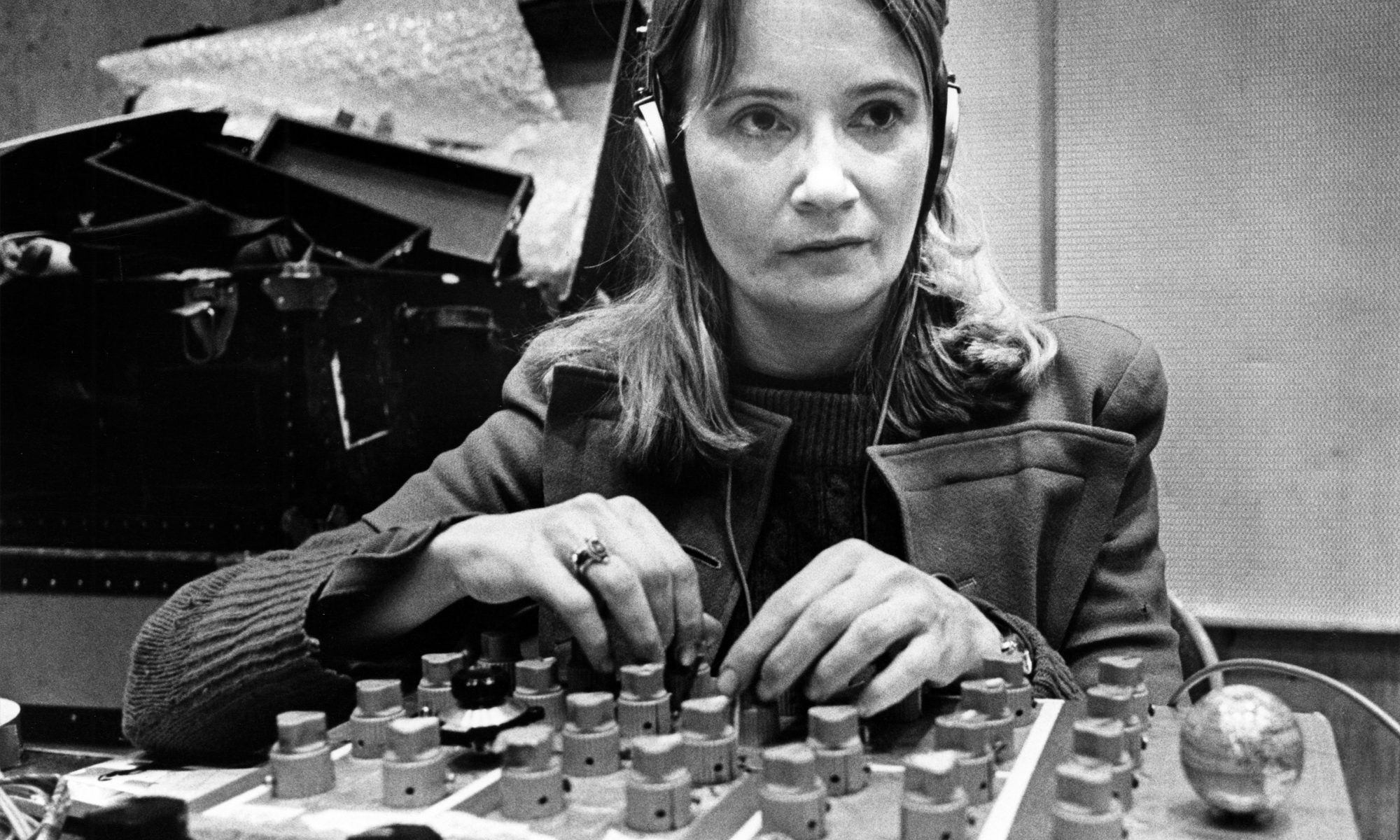
TORSE screening • Maryanne Amacher discussion & listening
January 14th, 2018, at Bread & Salt
1955 Julian Ave., San Diego, CA 92113
Amacher session: 5pm
TORSE screening: 8:30pm
General:
session $15 / screening $7 / both $20
Student / Member:
session $12 / screening $5 / both $15
SPACE TIME is very excited to present a rare screening of Merce Cunningham's piece TORSE, filmed by Charles Atlas in 1977, with music by Maryanne Amacher. A discussion and listening session of the music of Maryanne Amacher, led by Dr. Amy Cimini and collaborator Bill Dietz, will precede the screening, followed by another short discussion with Dr. Cimini and dancer Justin Morrison after the film.
Top image: Charles Atlas, Merce Cunningham. "Torse," 1977. Courtesy Electronic Arts Intermix (EAI), New York.




Torse
Charles Atlas, Merce Cunningham
1977, 55 min, color, sound, 16 mm film on HD video
Features double screen. Filmed in September 1977 at University of Washington, Seattle WA. First public screening, New York Public Library for the Performing Arts, Lincoln Center, 3 April 1978. I Ching, The Book of Changes provided the inspiration for "Torse", which utilized the numbers one to sixty four, both in its spatial plan (conceived as a square 8 x 8), and the movement phases (which constituted the language of the piece). The title of this ballet referred to the use of the torso throughout the dance. There were five basic back positions featured in Torse: upright, arch, twist, tilt and curve. The music was by Maryanne Amacher, and Mark Lancaster designed the costumes: the women wore black leotards and yellow tights, and the men wore yellow leotards and black tights.
Filmed for: The Jerome Robbins Archive, The Dance Collection, The New York Public Library, Merce Cunningham and Dance Company. Choreography: Merce Cunningham. Maryanne Amacher, "Remainder, 18." Costumes: Mark Lancaster.
Dancers: Karole Armitage, Louise Burns, Ellen Cornfield, Morgan Ensminger, Lisa Fox, Meg Harper, Chris Komar, Robert Kovich, Julie Roess-Smith, Jim Self. Filmed: August 24-26, 1977; Meany Hall, University of Washington; Seattle, Washington. Direction and Editing: Charles Atlas. Cameramen: Charles Atlas, Merce Cunningham, Niels Melo. Film Production: Niels Melo; Elepros, San Francisco. Filmed for: The Jerome Robbins Archive, The Dance Collection, The New York Public Library, with the assistance of a grant from The National Endowment for the Arts. Copyright © 1977; Cunningham Dance Foundation, Inc.
Text reprinted from The Merce Cunningham Trust. https://www.mercecunningham.org/
Screening courtesy Electronic Arts Intermix (EAI), New York. http://www.eai.org/
Maryanne Amacher (1938 – 2009) was a composer of large-scale fixed-duration sound installations and a highly original thinker in the areas of perception, sound spatialization, creative intelligence, and aural architecture. She is frequently cited as a pioneer of what has come to be called “sound art,” although her thought and creative practice consistently challenges key assumptions about the capacities and limitations of this nascent genre. Often considered to be a part of a post-Cagean lineage, her work anticipates some of the most important developments in network culture, media arts, acoustic ecology, and sound studies.
In the late 1960s, while a Creative Associate at the University of Buffalo, Amacher pioneered what she called “long distance music,” or telematic, site-related works that would later crystallize into her renowned City Links series. During her time as a fellow at MIT’s Center for Advanced Visual Studies (1972-1976), she began developing her “ear tone” music with the help of Marvin Minsky’s Triadex Muse, a synthesizer and compositional tool utilizing principles of artificial intelligence.
Amacher’s “ear tone” music emerged from creative use of combination and difference tones, along with otoacoustic emissions (known, in shorthand, as OAEs), or sounds produced spontaneously within the cochlea. Amacher followed developments and debates in otological research on OAEs and other psychoacoustic phenomena closely. Such independent scholarship was an important stimulus to her career-long research into “ways of hearing” and the creative potentialities of how the ear itself processes sounds both of itself and in situ.
After meeting John Cage through Lejaren Hiller at the University of Illinois in 1968, she went on to collaborate with Cage in the mid-1970s on Lecture on the Weather, and composed Close Up, an accompaniment to Cage’s Empty Words (1979). Remainder was commissioned for the Merce Cunningham Dance Company piece Torse, as well as the Charles Atlas film of the same name. In the late 1970s and early 1980s she developed presentational models for how her subsequent work should be “staged”: Music for Sound-Joined Rooms and Mini Sound Series.
She spent the 1980s also working on the materials for a multi-part drama originally imagined for TV and radio simulcast called Intelligent Life. While never fully realized, Intelligent Life reveals much of her thinking on music and the advancement of potentialities for future listeners, transcending the social and physiological limitations of music as we know it.
Amy Cimini is Assistant Professor of Music at UC San Diego. Her research engages 20th century philosophy and political thought with an emphasis on theories of the body and the ethics of experimental practice. She has published work drawn from this research in Contemporary Music Review, GAMUT, boundary 2, 20th Century Music, and a number of edited volumes. She is currently completing a monograph on Maryanne Amacher titled Wild Sound.
As a violist, Cimini participated in the world premier of Anthony Braxton’s opera Trillium J and her improvising duo, Archituethis Walks on Land, recently released their third record on the Carrier imprint.
Bill Dietz, born in 1983 in Arizona, has lived and worked in Berlin since 2003. From sounding the facade of Le Corbusier’s Unités d’habitation in Marseille to orchestrating echoes across city blocks in Manhattan, his work examines the genealogy of the concert and the performance of listening. Since 2012, he is the co-chair of Music/Sound in Bard College's MFA program. Since 2007, he has been the artistic director of Ensemble Zwischentöne. In 2013 he co-founded Ear Wave Event with Woody Sullender. He has worked extensively with Peter Ablinger, Catherine Christer Hennix, Chris Newman, Christian von Borries, and through 2009 with Maryanne Amacher. In 2015, Editions Solitude released a monograph on his "Tutorial Diverions." In 2017, oncurating.org & the Donaueschinger Musiktage released, L’école de la claque, a collection of scores and essays. https://www.tutorialdiversions.org/
Justin Morrison is a dance maker and teacher. He presently serves as Lecturer in Dance at San Diego State University.
Charles Atlas, Merce Cunningham
1977, 55 min, color, sound, 16 mm film on HD video
Features double screen. Filmed in September 1977 at University of Washington, Seattle WA. First public screening, New York Public Library for the Performing Arts, Lincoln Center, 3 April 1978. I Ching, The Book of Changes provided the inspiration for "Torse", which utilized the numbers one to sixty four, both in its spatial plan (conceived as a square 8 x 8), and the movement phases (which constituted the language of the piece). The title of this ballet referred to the use of the torso throughout the dance. There were five basic back positions featured in Torse: upright, arch, twist, tilt and curve. The music was by Maryanne Amacher, and Mark Lancaster designed the costumes: the women wore black leotards and yellow tights, and the men wore yellow leotards and black tights.
Filmed for: The Jerome Robbins Archive, The Dance Collection, The New York Public Library, Merce Cunningham and Dance Company. Choreography: Merce Cunningham. Maryanne Amacher, "Remainder, 18." Costumes: Mark Lancaster.
Dancers: Karole Armitage, Louise Burns, Ellen Cornfield, Morgan Ensminger, Lisa Fox, Meg Harper, Chris Komar, Robert Kovich, Julie Roess-Smith, Jim Self. Filmed: August 24-26, 1977; Meany Hall, University of Washington; Seattle, Washington. Direction and Editing: Charles Atlas. Cameramen: Charles Atlas, Merce Cunningham, Niels Melo. Film Production: Niels Melo; Elepros, San Francisco. Filmed for: The Jerome Robbins Archive, The Dance Collection, The New York Public Library, with the assistance of a grant from The National Endowment for the Arts. Copyright © 1977; Cunningham Dance Foundation, Inc.
Text reprinted from The Merce Cunningham Trust. https://www.mercecunningham.org/
Screening courtesy Electronic Arts Intermix (EAI), New York. http://www.eai.org/
Maryanne Amacher (1938 – 2009) was a composer of large-scale fixed-duration sound installations and a highly original thinker in the areas of perception, sound spatialization, creative intelligence, and aural architecture. She is frequently cited as a pioneer of what has come to be called “sound art,” although her thought and creative practice consistently challenges key assumptions about the capacities and limitations of this nascent genre. Often considered to be a part of a post-Cagean lineage, her work anticipates some of the most important developments in network culture, media arts, acoustic ecology, and sound studies.
In the late 1960s, while a Creative Associate at the University of Buffalo, Amacher pioneered what she called “long distance music,” or telematic, site-related works that would later crystallize into her renowned City Links series. During her time as a fellow at MIT’s Center for Advanced Visual Studies (1972-1976), she began developing her “ear tone” music with the help of Marvin Minsky’s Triadex Muse, a synthesizer and compositional tool utilizing principles of artificial intelligence.
Amacher’s “ear tone” music emerged from creative use of combination and difference tones, along with otoacoustic emissions (known, in shorthand, as OAEs), or sounds produced spontaneously within the cochlea. Amacher followed developments and debates in otological research on OAEs and other psychoacoustic phenomena closely. Such independent scholarship was an important stimulus to her career-long research into “ways of hearing” and the creative potentialities of how the ear itself processes sounds both of itself and in situ.
After meeting John Cage through Lejaren Hiller at the University of Illinois in 1968, she went on to collaborate with Cage in the mid-1970s on Lecture on the Weather, and composed Close Up, an accompaniment to Cage’s Empty Words (1979). Remainder was commissioned for the Merce Cunningham Dance Company piece Torse, as well as the Charles Atlas film of the same name. In the late 1970s and early 1980s she developed presentational models for how her subsequent work should be “staged”: Music for Sound-Joined Rooms and Mini Sound Series.
She spent the 1980s also working on the materials for a multi-part drama originally imagined for TV and radio simulcast called Intelligent Life. While never fully realized, Intelligent Life reveals much of her thinking on music and the advancement of potentialities for future listeners, transcending the social and physiological limitations of music as we know it.
Amy Cimini is Assistant Professor of Music at UC San Diego. Her research engages 20th century philosophy and political thought with an emphasis on theories of the body and the ethics of experimental practice. She has published work drawn from this research in Contemporary Music Review, GAMUT, boundary 2, 20th Century Music, and a number of edited volumes. She is currently completing a monograph on Maryanne Amacher titled Wild Sound.
As a violist, Cimini participated in the world premier of Anthony Braxton’s opera Trillium J and her improvising duo, Archituethis Walks on Land, recently released their third record on the Carrier imprint.
Bill Dietz, born in 1983 in Arizona, has lived and worked in Berlin since 2003. From sounding the facade of Le Corbusier’s Unités d’habitation in Marseille to orchestrating echoes across city blocks in Manhattan, his work examines the genealogy of the concert and the performance of listening. Since 2012, he is the co-chair of Music/Sound in Bard College's MFA program. Since 2007, he has been the artistic director of Ensemble Zwischentöne. In 2013 he co-founded Ear Wave Event with Woody Sullender. He has worked extensively with Peter Ablinger, Catherine Christer Hennix, Chris Newman, Christian von Borries, and through 2009 with Maryanne Amacher. In 2015, Editions Solitude released a monograph on his "Tutorial Diverions." In 2017, oncurating.org & the Donaueschinger Musiktage released, L’école de la claque, a collection of scores and essays. https://www.tutorialdiversions.org/
Justin Morrison is a dance maker and teacher. He presently serves as Lecturer in Dance at San Diego State University.
